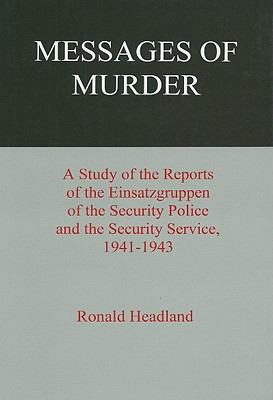
Book
|
Messages of murder : a study of the reports of the Einsatzgruppen of the Security Police and the Security Service, 1941-1943
-- Einsatzgruppen
Copies
1 Total copies, 1 Copies are in,
0 Copies are out.
Title
Messages of murder : a study of the reports of the Einsatzgruppen of the Security Police and the Security Service, 1941-1943 -- Einsatzgruppen
Call No
DS135.R92
Authors
Subjects
Jews--Persecutions--Soviet Union--Sources.
Holocaust, Jewish (1939-1945)--Soviet Union--Sources.
Nationalsozialistische Deutsche Arbeiter-Partei. Schutzstaffel. Sicherheitsdienst--History--Sources.
Nationalsozialistische Deutsche Arbeiter-Partei. Schutzstaffel. Sicherheitspolizei--History--Sources.
World War, 1939-1945--Secret service--Germany--Sources.
Soviet Union--Ethnic relations--Sources.
Soviet Union--Ethnic relations.
Holocaust, Jewish (1939-1945)--Soviet Union--Sources.
Nationalsozialistische Deutsche Arbeiter-Partei. Schutzstaffel. Sicherheitsdienst--History--Sources.
Nationalsozialistische Deutsche Arbeiter-Partei. Schutzstaffel. Sicherheitspolizei--History--Sources.
World War, 1939-1945--Secret service--Germany--Sources.
Soviet Union--Ethnic relations--Sources.
Soviet Union--Ethnic relations.
Language
English
Published
Rutherford [N.J.] : Fairleigh Dickinson University Press ; London : Associated University Presses, ©1992.
Publication Desc
303 pages ;
ISBN
0838634184
(alk. paper)
LCCN
90056046
Dimensions
25 cm









